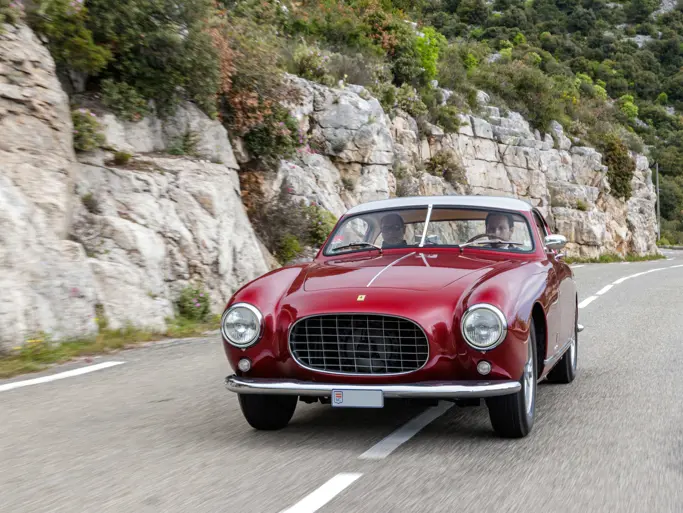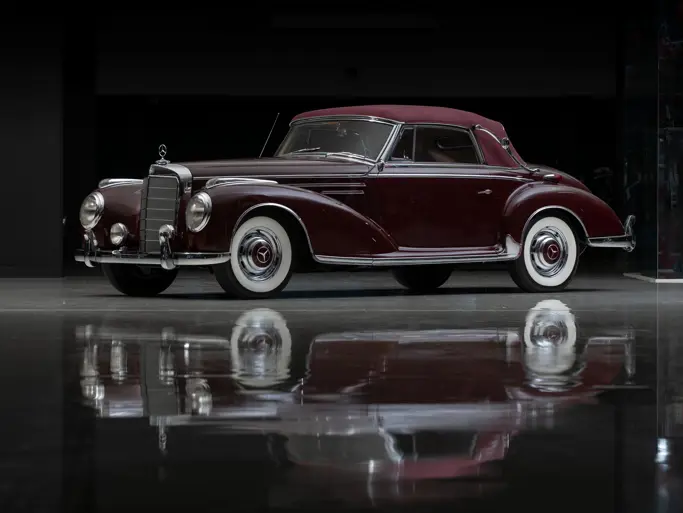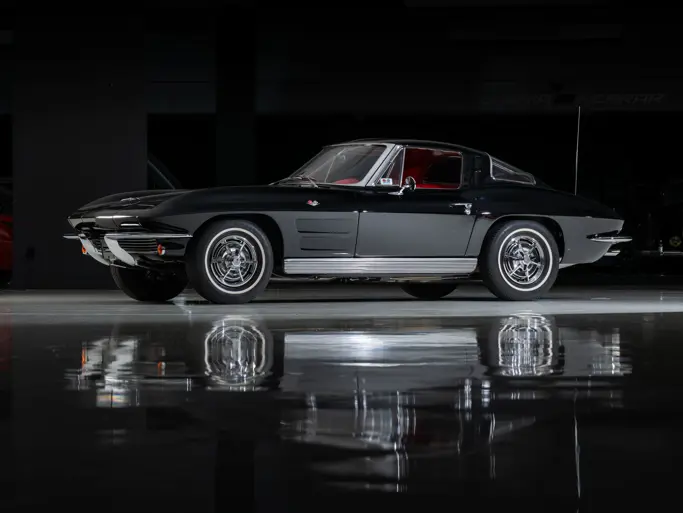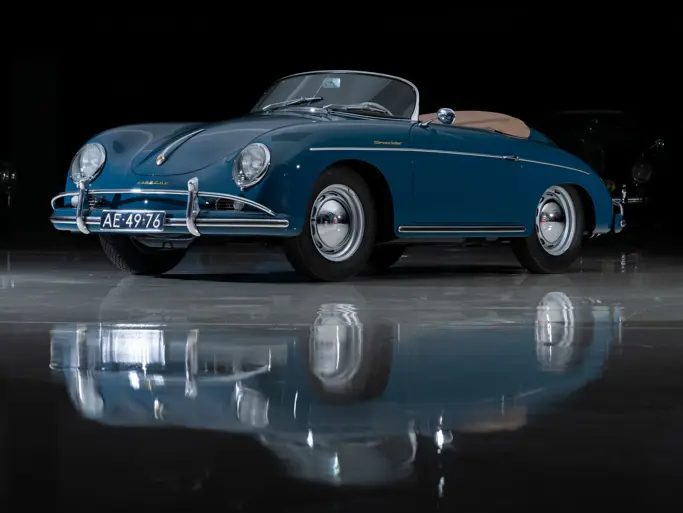The decision to drop the Lincoln Continental after 1948 was not unanimous. While the new-for-1949 body did not lend itself to the theme, there were several proposals for specialty models with exposed spare tires, which providentially never saw production. Thus the way was left clear for an all-new, clean-sheet-of-paper Continental for 1956. This handsome coupe with vestigial spare, styled by John Reinhart and Gordon Buehrig, was consigned to a new Continental Division headed by William Clay Ford, youngest of the three sons of Edsel Ford. Although not given the name “Lincoln” by Ford, it is generally considered as such by the public.
Fort Lauderdale 2015
1956 Lincoln Continental Mark II
{{lr.item.text}}
$28,600 USD | Sold
 | Fort Lauderdale, Florida
| Fort Lauderdale, Florida
{{internetCurrentBid}}
{{internetTimeLeft}}

The Mark II was not made by Lincoln, but by the short-lived Continental Division of the Ford Motor Company. The Mark II had a sticker price of $10,400, twice the price of the standard 1956 Lincoln offerings, and was considered as one of the world’s most expensive cars. Much of the car was assembled by hand, and Ford claimed it lost approximately $1,000 on each example sold. The unprofitable Mark II and the Continental Division were discontinued after Ford went public in 1956, even though these cars brought people into the showrooms to buy additional Ford products.
The Continental Mark II was a two-door personal luxury car with European flair that showed a new direction for Ford Motor Co. Standard equipment included power steering, brakes, windows and antenna and automatic transmission. The lone option offered was air conditioning, such as this car has. The Continental Mark II was one of few elite automobiles of the 1950s that was coveted by the rich and famous and some examples ended up in the hands of such celebrities as Frank Sinatra, Elvis Presley, Louis Prima and President Dwight D. Eisenhower to name but a few.
This Starmist White example has a red and white vinyl interior, and runs with, as did all 1956 Continentals run with a 368-cid, 300-hp, V-8 engine with four-barrel carburetor and three-speed automatic transmission. The current owner states that he has maintained the car as original, including factory replacement or equivalent of all paint, patterns, parts and materials. The only reported deviations from stock are the original Holley carburetor has been upgraded by the prior Charlotte, North Carolina Lincoln Club president (and former owner) to the 1957 Lincoln Carter-built carb. This is an upgrade that various Mark II owners did for a performance boost. Second, the front seat is of factory pattern and color match, but is presented in vinyl. This has been addressed by a national Lincoln and Continental Owner’s Club technical advisor who indicates that this should not adversely affect the cars value. The current owner also conveys that he does not show the car, so the engine compartment, while repainted, may not reflect show-type quality.
The original paint was stripped to bare metal and repainted in the factory-specified Starmist White. There are no dings, dents, orange peel, swirls or scratches. There were some “BB-sized” holes around the left rear wheelwell and some around the fuel door filler pipe. These minor preservations were made with “putty coat” materials. The radial tires are approximately five years old. The owner has disclosed that the radio and speakers were restored to factory specs, but the system now has a loose wire connection. It has been wired separately for satellite radio and one is installed with sound routed through the original AM. Also, the power antenna does not work, and this repair needs front fender removal to be properly executed. The final disclosure is that the factory clock is disconnected. The Lincoln is also accompanied by original marketing materials such as advertisements, hardback “glovebox” manual, uncommon hardback dealer salesman manual and technical shop manuals that are collectively said to be good condition originals. The owner also notes that all parts that have been removed are retained and have been boxed and marked for proper identification.
Ford originally planned to build about 2,000 Mark IIs a year for five years. The reality turned out to be 2,550 built in the 1956 model year and 444 more in the following year. It is reported that approximately 1,500 examples are still in existence, making for a very much coveted slice of automotive history.





